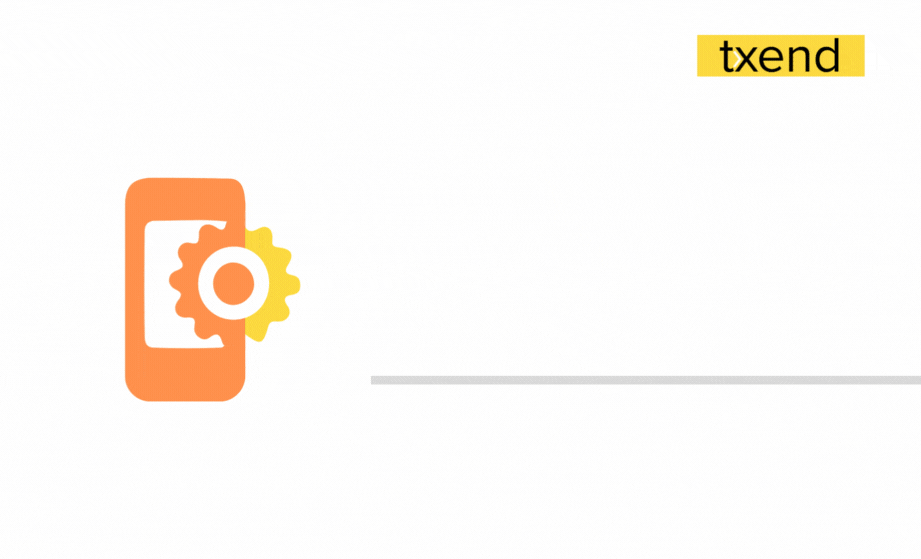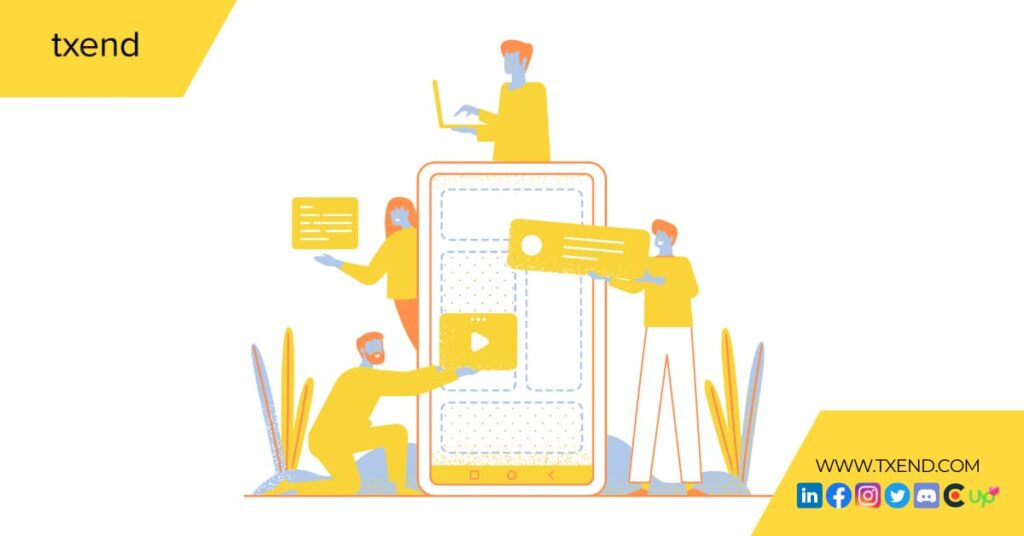As fintech revolutionizes finance, its potential to empower and redefine financial services remains at the forefront.
Experience the transformative potential of fintech app development. Discover how these apps are reshaping financial interactions, streamlining transactions, and introducing innovative investment platforms.
Explore the dynamic fintech market, diverse application landscape, and standout success stories, all in this brief overview.
Fintech merges technology and finance, revolutionizing services. It streamlines transactions, simplifies investments, and transforms processes.
From mobile payments to robo-advisors, fintech shapes modern finance. It’s a dynamic landscape of innovation and convenience.
The pandemic’s impact was evident in the diverse realm of fintech apps, including wealth management, payments, lending, and insurance. The funding saw a 19% Q1 2020 drop to $6.1 billion, yet contactless payments and digital banking surged. Robinhood’s user base grew, and e-commerce thrived.
Digitalization is vital for cost-cutting and efficiency in financial services.
Market shifts may spur mergers in lending.
Robo-advisors gain traction, offering automated investment solutions.
Our fintech solutions embrace change, equipping you for emerging opportunities.
Before making a fintech mobile app, think carefully about what category it falls into.
Fintech apps encompass a diverse spectrum, each catering to specific financial needs. From budgeting and personal finance management to peer-to-peer lending platforms, the Fintech app ecosystem is a testament to technology’s versatility.
Fintech apps serve diverse financial needs, offering:
In the vast sea of Fintech apps, a few have risen to the top through innovation and user-centric design.
This commission-free stock trading app democratized investing, making it accessible to a broader audience through its user-friendly interface.
A pioneer in online payments, PayPal enables secure money transfers and online transactions, acting as a digital wallet for millions.
Mint offers comprehensive personal finance management, assisting users in tracking expenses, creating budgets, and managing financial goals seamlessly.
Acorns round up everyday purchases to invest the spare change, helping users grow savings and investments effortlessly.
A peer-to-peer payment app, Venmo simplifies splitting bills and sending money to friends with a social feed to share payment activities.
As Fintech apps continue to reshape financial landscapes and drive accessibility, the journey is far from over. Stay tuned as we navigate the waves of change, witnessing how technology propels us toward a future where finance knows no bounds.

In the ever-evolving financial landscape, the rise of fintech app development has heralded a remarkable transformation, redefining accessibility and convenience. These apps introduce dynamic solutions that effectively address critical challenges shaping the world of finance.
Fintech apps act as catalysts for user empowerment. By imparting essential financial literacy, individuals can make intelligent and sensible financial decisions, fostering a path toward economic well-being.
Fintech applications are pivotal in forging seamless collaboration between traditional financial institutions and cutting-edge apps. This synergy elevates financial services, offering users enriched and comprehensive solutions that bridge gaps and extend capabilities.
Capitalize on the ubiquity of mobile phones, fintech apps transcend barriers, reaching diverse demographics. They are reshaping how individuals interact with finances, streamlining transactions and interactions on the go.
Embracing the transformative potential of fintech app development ignites a journey that not only bridges gaps in financial accessibility but also charts a course toward empowered financial futures.
In the ever-evolving landscape of fintech app development, many essential features have been introduced, fundamentally reshaping how we engage with our finances.
Through an ingenious blend of innovation and security, these features work harmoniously to enhance the user experience and redefine financial interactions.
Fintech mobile applications prioritize robust security measures, which users value highly. An astonishing 90% of fintech app users consider security the most essential financial application feature.
By safeguarding sensitive financial data and transactions, these apps create a fortified environment, inspiring user trust and confidence.
The integration of various payment methods within these apps has proven its worth. Fintech apps with seamless payments integration have witnessed a remarkable 25% increase in user retention rates.
This user-centric approach streamlines financial transactions and contributes significantly to user satisfaction.
The incorporation of machine learning algorithms brings a touch of personalization and intelligence. Fintech apps utilizing machine learning have recorded an impressive 40% rise in user engagement and active usage.
Providing personalized insights, recommendations, and predictive analysis empowers users to make informed financial decisions, enriching their financial journeys.
User-friendly and interactive dashboards offer comprehensive financial overviews, making financial management more effective.
Studies indicate that interactive dashboards have led to a 30% increase in users proactively managing their budgets and financial goals. This visual representation of financial data enhances user control and financial planning.
Fintech apps embracing cutting-edge voice recognition technology have yielded tangible benefits. User satisfaction rates have witnessed a remarkable 15% boost, underscoring the enhancement in the overall app experience.
Voice integration empowers users to effortlessly access information and execute transactions using voice commands, streamlining user interactions.
Embrace the captivating realm of fintech app development, where innovation and functionality converge harmoniously to create a secure and dynamic financial journey.

Embarking on the journey of fintech app development requires a methodical approach, encompassing essential stages that pave the way for a successful and impactful Fintech Mobile Application.
Begin by carefully selecting a specific niche within the expansive fintech landscape. This decision shapes the direction of your app, allowing you to cater to the distinct needs of a particular area.
Focusing on a niche ensures that your app remains relevant and valuable to its intended users.
Navigating compliance is a foundational step in app development. Ensure that your app adheres to industry regulations and security standards.
This establishes a sense of trust among users and ensures the safeguarding of sensitive financial data, a critical aspect in fintech applications.
Delve into careful consideration of the features your app will encompass. It’s vital to align these features with the demands of your target users and current industry trends.
By addressing user pain points and offering innovative functionalities, your app gains a competitive edge in the fintech market.
Assemble a cohesive and skilled project team. Combining technical expertise with an understanding of the financial landscape ensures a well-rounded approach. The collaborative efforts of your team members will drive the success of your app development journey.
Craft an intuitive and user-centric design that aligns with the expectations of modern users. The aesthetics and functionality of your app’s design contribute to an engaging user experience. A well-designed interface enhances user engagement and promotes seamless interaction.
It is developing a Minimum Viable Product (MVP) product which is an important step. It allows you to test core functionalities and gather valuable user feedback. This iterative process aids in refining your app, ensuring it meets user expectations and performs optimally.
Prioritize rigorous quality analysis to guarantee that your app functions seamlessly. Testing its functionality, security measures, and overall user experience ensures users receive a reliable and efficient Fintech Mobile Application.
By following these crucial steps, your path in fintech app development is strategically planned, leading to the creation of a Fintech Mobile Application that resonates within the dynamic and innovative world of financial technology.
Unveil the core technological underpinnings that drive the innovation of Fintech Mobile Applications:
 Understanding the cost of Fintech Mobile Application development is crucial in realizing your financial technology vision. Creating a robust and feature-rich Fintech Mobile Application involves various factors influencing the overall development cost.
Understanding the cost of Fintech Mobile Application development is crucial in realizing your financial technology vision. Creating a robust and feature-rich Fintech Mobile Application involves various factors influencing the overall development cost.
The complexity of functionalities, design intricacies, platform compatibility (Android, iOS, or cross-platform), and integration with financial services contribute to the expense. Additionally, ongoing maintenance and updates play a role in long-term cost considerations.
By aligning your vision with your budget, you can embark on the Fintech Mobile Application development journey well-prepared, ensuring a successful and innovative outcome that resonates in financial technology.
In a rapidly evolving fintech landscape, staying ahead requires embracing cutting-edge trends that set your Fintech Mobile Application apart.
Integrate machine learning algorithms into your app to offer personalized financial insights and predictions. ML enhances user engagement and positions your app as a valuable financial companion.
Leverage AI-powered chatbots for customer interactions, providing real-time assistance and streamlining user experiences. AI-driven analytics also help users make informed financial decisions.
Incorporate gamification elements to make financial management engaging. Rewards, challenges, and interactive interfaces encourage users to manage their finances actively, increasing user retention.
Utilize big data analytics to understand user behaviors, preferences, and trends. Tailor your app’s offerings based on data-driven insights, enhancing user satisfaction.
Adopt microservices architecture for scalability and flexibility. It enables your app to seamlessly handle increasing user demands and adapt to evolving market dynamics.
Integrate blockchain for secure and transparent transactions. It instills trust among users by ensuring tamper-proof records and data protection.
By embracing these industry trends, your Fintech Mobile Application can establish a unique market presence and deliver exceptional value in the dynamic world of financial technology.
Fintech app development triggers a revolutionary shift in financial technology, redefining access and ease. These apps offer solutions to finance’s pressing challenges.
Fintech apps empower users with financial literacy, bridging traditional institutions and tech for enriched services. Leveraging mobile ubiquity, they reshape transactions for diverse demographics.
Key figures include a 19% Q1 2020 funding drop, a potential 40% traditional bank revenue shift, Robinhood’s user surge, and e-commerce success amid closures.
As fintech apps reshape finance, we’re poised for boundless innovation. This journey propels us toward a future where finance knows no limits, empowering individuals with unprecedented possibilities.
© 2024 Thdinfinity. All Rights Reserved
We found Thdinfinity to be always one step ahead in terms of identifying and solving problems